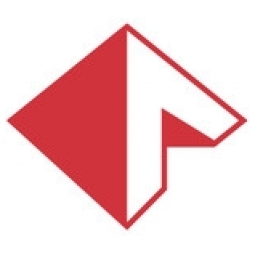Customer Company Size
SME
Region
- America
Country
- United States
Product
- Aegis manufacturing operations software suite
- NPI modules
- Aegis Quality Data Collection tool
Tech Stack
- PC software products
- Electronic workstations
- ERP software
Implementation Scale
- Enterprise-wide Deployment
Impact Metrics
- Productivity Improvements
- Cost Savings
- Customer Satisfaction
Technology Category
- Application Infrastructure & Middleware - Data Exchange & Integration
Applicable Industries
- Electronics
- Equipment & Machinery
Applicable Functions
- Discrete Manufacturing
- Quality Assurance
Use Cases
- Predictive Maintenance
- Manufacturing System Automation
Services
- System Integration
- Software Design & Engineering Services
About The Customer
Quality Production Ltd (QPL) is an EMS provider specializing in turnkey manufacturing of high mix, high complexity and extremely reliable products for the military, avionics, industrial, medical and energy management markets. QPL works with all popular PCB, component, soldering and test technologies, and provides mechanical assembly, box build and packaging in addition to assembly. QPL had been using a paper-based manufacturing system which became unsatisfactory for a number of reasons. The system was not an integrated solution, with word processing, spreadsheet, database and drawing functions each obtained from separate, standard PC software products. Combining these into a usable documentation package was very difficult and labor intensive. Document version control problems also arose during use. Additionally, extracting timely quality data presented substantial difficulties.
The Challenge
Quality Production Ltd (QPL) had been using a paper-based manufacturing system which became unsatisfactory for a number of reasons. The system was not an integrated solution, with word processing, spreadsheet, database and drawing functions each obtained from separate, standard PC software products. Combining these into a usable documentation package was very difficult and labor intensive. Document version control problems also arose during use. Additionally, extracting timely quality data presented substantial difficulties. In reviewing and considering improvements for this process, QPL identified and prioritized a number of requirements: Increased speed and accuracy in BOM scrubbing and creating documentation packages, better efficiency in communicating ECO information to the shop floor, reduced machine programming times, extraction of real time data to drive QPL’s quality improvement initiative, and implementation of these improvements within a completely paperless environment.
The Solution
After a review of suppliers who could potentially meet their requirements, QPL chose to partner with Aegis to implement their integrated manufacturing operations software suite. Following their operating experience with these software products and the superior customer service provided, QPL regards Aegis as a quality supplier. They found that the software performed as an integrated solution that solved all of the problems created by their earlier, paper-based manufacturing system. Additionally, Aegis’ support was unstinting and invaluable as QPL moved through a phased introduction of software to meet all of their stated requirements. During Phase One QPL implemented the NPI modules for document creation, BOM scrubbing and machine programming. Phase Two saw QPL go paperless while installing electronic workstations across the production floor. Phase Three implemented traceability of product and real time data analysis.
Operational Impact
Quantitative Benefit

Case Study missing?
Start adding your own!
Register with your work email and create a new case study profile for your business.
Related Case Studies.

Case Study
Smart Water Filtration Systems
Before working with Ayla Networks, Ozner was already using cloud connectivity to identify and solve water-filtration system malfunctions as well as to monitor filter cartridges for replacements.But, in June 2015, Ozner executives talked with Ayla about how the company might further improve its water systems with IoT technology. They liked what they heard from Ayla, but the executives needed to be sure that Ayla’s Agile IoT Platform provided the security and reliability Ozner required.

Case Study
IoT enabled Fleet Management with MindSphere
In view of growing competition, Gämmerler had a strong need to remain competitive via process optimization, reliability and gentle handling of printed products, even at highest press speeds. In addition, a digitalization initiative also included developing a key differentiation via data-driven services offers.

Case Study
Predictive Maintenance for Industrial Chillers
For global leaders in the industrial chiller manufacturing, reliability of the entire production process is of the utmost importance. Chillers are refrigeration systems that produce ice water to provide cooling for a process or industrial application. One of those leaders sought a way to respond to asset performance issues, even before they occur. The intelligence to guarantee maximum reliability of cooling devices is embedded (pre-alarming). A pre-alarming phase means that the cooling device still works, but symptoms may appear, telling manufacturers that a failure is likely to occur in the near future. Chillers who are not internet connected at that moment, provide little insight in this pre-alarming phase.

Case Study
Remote Temperature Monitoring of Perishable Goods Saves Money
RMONI was facing temperature monitoring challenges in a cold chain business. A cold chain must be established and maintained to ensure goods have been properly refrigerated during every step of the process, making temperature monitoring a critical business function. Manual registration practice can be very costly, labor intensive and prone to mistakes.

Case Study
Premium Appliance Producer Innovates with Internet of Everything
Sub-Zero faced the largest product launch in the company’s history:It wanted to launch 60 new products as scheduled while simultaneously opening a new “greenfield” production facility, yet still adhering to stringent quality requirements and manage issues from new supply-chain partners. A the same time, it wanted to increase staff productivity time and collaboration while reducing travel and costs.








